The Future of Manufacturing: Exploring the Benefits of Cryogenic Deflashing
An introduction to cryogenic deflashing
In the ever-evolving world of manufacturing, innovation is key to staying ahead of the competition. One advancement that is revolutionising the industry is cryogenic deflashing. This cutting-edge process utilizes extreme cold temperatures to remove excess flash and burrs from moulded parts, resulting in a smoother and more precise finished product. But what exactly are the benefits of cryogenic deflashing, and how does it compare to traditional methods? In this article, we will explore the numerous advantages that this technique offers. From increased productivity and cost-effectiveness to improved product quality and environmental sustainability, cryogenic deflashing is poised to reshape the way we manufacture. So, if you’re curious about how it can benefit your business, read on to discover the exciting potential of cryogenic deflashing.
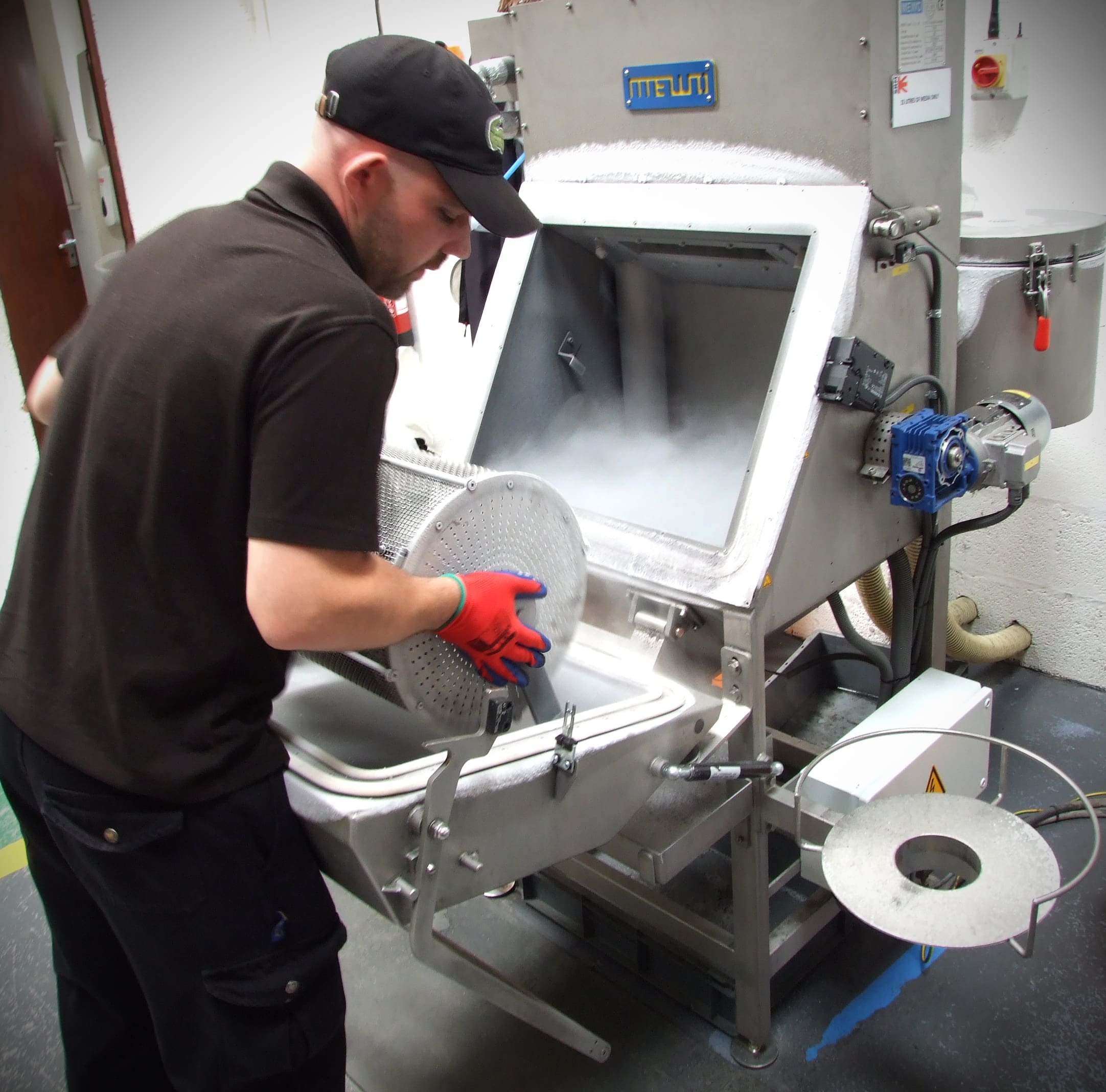
What is cryogenic deflashing and how does it work?
Cryogenic deflashing is a manufacturing process that involves the use of extreme cold temperatures to remove excess flash and burrs from moulded parts. Flash is the excess material that is formed during the moulding process, while burrs are small raised edges or imperfections that can occur on the surface of the part. These imperfections can affect the functionality and appearance of the finished product. Cryogenic deflashing tackles this issue by subjecting the parts to sub-zero temperatures in a controlled environment.
The process begins by placing the parts in a specially designed chamber, where liquid nitrogen or carbon dioxide is introduced. These cryogenic agents rapidly cool the parts, causing the flash and burrs to become brittle. Once the desired temperature is reached, the parts are subjected to a tumbling or blasting action, which breaks off the excess material. The cryogenic agents also sublimate, transforming from a solid to a gas state and leaving no residue on the parts. The result is a clean, smooth, and precise finished product.
Cryogenic deflashing offers several advantages over traditional methods. Firstly, it is a non-abrasive process, which means that it does not cause any damage to the parts being treated. This is particularly important for delicate or intricate parts that may be more susceptible to damage. Additionally, cryogenic deflashing is a highly efficient process, as it can treat multiple parts simultaneously in a relatively short amount of time. This leads to increased productivity and shorter lead times, allowing manufacturers to meet customer demands more effectively.
 The benefits of cryogenic deflashing in manufacturing
The benefits of cryogenic deflashing in manufacturing
The benefits of cryogenic deflashing in manufacturing are vast and varied. One of the key advantages is the improved product quality that can be achieved through this process. By removing excess flash and burrs, cryogenic deflashing ensures that the final product meets the required specifications and standards. This results in a more aesthetically pleasing product with consistent dimensions and a higher level of functionality. The removal of flash and burrs also eliminates any potential safety hazards, ensuring that the end product is safe to use.
In addition to improved product quality, cryogenic deflashing also offers significant cost savings for manufacturers. Traditional deflashing methods often involve labour-intensive processes, such as manual trimming or grinding, which can be time-consuming and expensive. Cryogenic deflashing, on the other hand, is an automated and efficient process that requires minimal human intervention. This reduces labour costs and allows manufacturers to reallocate resources to other areas of production. Furthermore, cryogenic deflashing eliminates the need for additional finishing processes, such as sanding or polishing, which can further reduce costs and save time.
Another notable benefit of cryogenic deflashing is its positive impact on the environment. Traditional deflashing methods often generate a significant amount of waste, such as dust or debris from grinding or trimming. This waste not only requires disposal but also contributes to pollution and environmental damage. Cryogenic deflashing, on the other hand, is a clean and environmentally friendly process. The cryogenic agents used in the process sublimate, leaving no residue or waste behind. This makes it a sustainable and eco-friendly choice for manufacturers looking to reduce their environmental footprint.
Applications of cryogenic deflashing in different industries
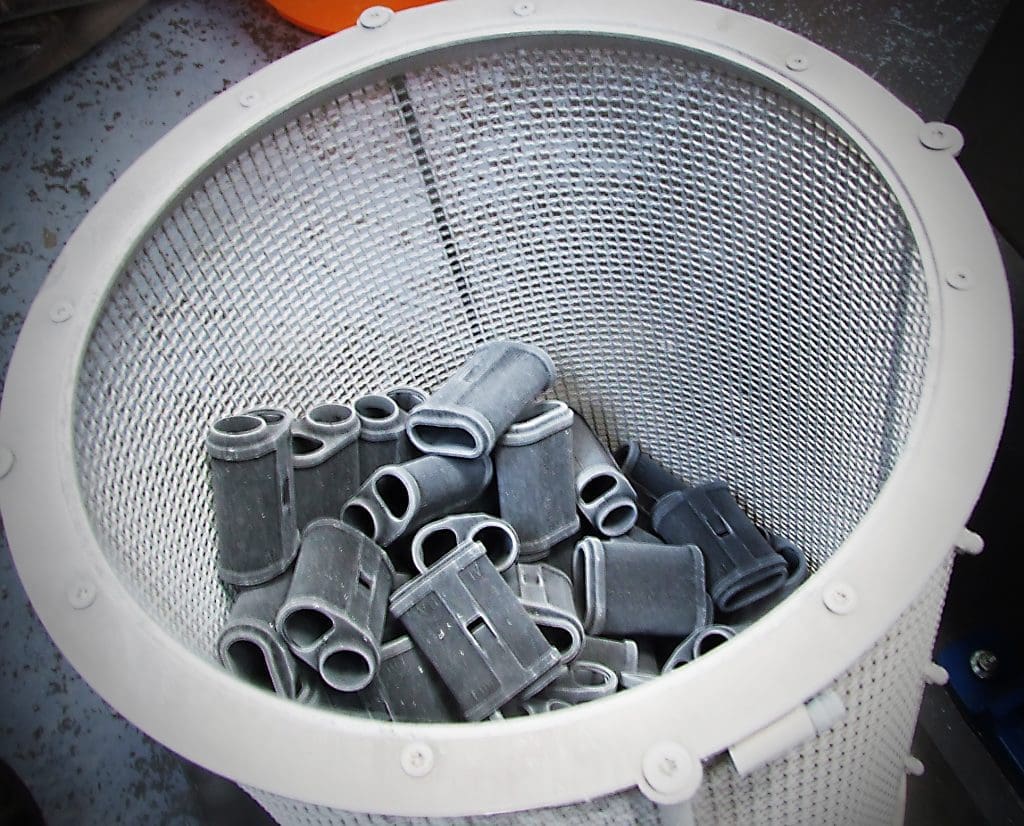 Cryogenic deflashing has a wide range of applications across various industries. One notable industry that benefits from this process is the automotive industry. Automotive parts, such as seals, gaskets, and connectors, often require precise dimensions and a smooth surface finish. Cryogenic deflashing ensures that these parts meet the stringent quality standards of the industry. It also enhances the performance and durability of the parts, leading to a more reliable and efficient automotive product.
Cryogenic deflashing has a wide range of applications across various industries. One notable industry that benefits from this process is the automotive industry. Automotive parts, such as seals, gaskets, and connectors, often require precise dimensions and a smooth surface finish. Cryogenic deflashing ensures that these parts meet the stringent quality standards of the industry. It also enhances the performance and durability of the parts, leading to a more reliable and efficient automotive product.
The medical device industry is another sector that can greatly benefit from cryogenic deflashing. Medical devices often require high levels of precision and cleanliness to ensure patient safety. By removing flash and burrs, cryogenic deflashing ensures that medical devices are free from potential contaminants and imperfections. This is particularly crucial for devices such as surgical instruments, where any kind of flaw or contamination could have serious consequences. Additionally, cryogenic deflashing can be used to remove excess material from tubing or connectors, ensuring a seamless and hygienic product.
The electronics industry is yet another sector that can leverage the advantages of cryogenic deflashing. Electronics components, such as connectors, switches, and circuit boards, often require tight tolerances and smooth surfaces to ensure proper functionality. Cryogenic deflashing can remove flash and burrs from these components, ensuring that they meet the required specifications. This leads to improved reliability and performance of electronic devices, ultimately benefiting both manufacturers and end-users.
Cryogenic deflashing vs. traditional deflashing methods
 When comparing cryogenic deflashing to traditional deflashing methods, several key differences and advantages become apparent. One of the main distinctions is the level of precision and consistency that can be achieved with cryogenic deflashing. Traditional methods, such as manual trimming or grinding, often rely on human operators and can be prone to human error. This can result in inconsistencies in the final product, with variations in dimensions or surface finish. Cryogenic deflashing, on the other hand, is an automated process that can achieve a high level of precision and consistency. This ensures that each part is treated uniformly, resulting in a more reliable and aesthetically pleasing finished product.
When comparing cryogenic deflashing to traditional deflashing methods, several key differences and advantages become apparent. One of the main distinctions is the level of precision and consistency that can be achieved with cryogenic deflashing. Traditional methods, such as manual trimming or grinding, often rely on human operators and can be prone to human error. This can result in inconsistencies in the final product, with variations in dimensions or surface finish. Cryogenic deflashing, on the other hand, is an automated process that can achieve a high level of precision and consistency. This ensures that each part is treated uniformly, resulting in a more reliable and aesthetically pleasing finished product.
Another significant difference between cryogenic deflashing and traditional methods is the level of damage or stress inflicted on the parts. Traditional methods, such as abrasive grinding or sanding, can cause deformation or damage to the parts being treated. This is particularly problematic for delicate or intricate parts that may require a more gentle approach. Cryogenic deflashing, with its non-abrasive nature, eliminates the risk of damage to the parts. The extreme cold temperatures make the flash and burrs brittle, allowing them to be easily removed without causing any harm to the parts themselves. This makes cryogenic deflashing a suitable choice for a wide range of parts, including those with complex geometries or fragile features.
The future of cryogenic deflashing in manufacturing
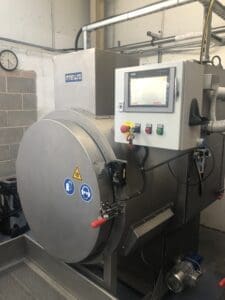 The future of cryogenic deflashing in manufacturing looks promising, with increasing adoption and advancements in the technology. As manufacturers continue to seek ways to improve product quality, increase productivity, and reduce costs, cryogenic deflashing offers a compelling solution. The automated and efficient nature of the process allows manufacturers to streamline their production processes and meet customer demands more effectively. Additionally, the environmental benefits of cryogenic deflashing make it an attractive choice for companies looking to reduce their carbon footprint and embrace sustainability.
The future of cryogenic deflashing in manufacturing looks promising, with increasing adoption and advancements in the technology. As manufacturers continue to seek ways to improve product quality, increase productivity, and reduce costs, cryogenic deflashing offers a compelling solution. The automated and efficient nature of the process allows manufacturers to streamline their production processes and meet customer demands more effectively. Additionally, the environmental benefits of cryogenic deflashing make it an attractive choice for companies looking to reduce their carbon footprint and embrace sustainability.
Advancements in cryogenic deflashing technology are also expected to drive its future growth. As new materials and manufacturing techniques emerge, the need for precise and efficient deflashing methods becomes even more critical. Cryogenic deflashing has already shown its versatility in treating a wide range of materials, including plastics, elastomers, and metals. As new materials are developed, cryogenic deflashing can easily be adapted to handle these materials, ensuring that manufacturers can continue to benefit from this innovative process.
Implementing cryogenic deflashing in your manufacturing process
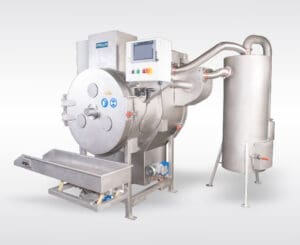 Implementing cryogenic deflashing in your manufacturing process can bring numerous benefits, but it is crucial to consider certain factors before making the switch. Firstly, it is essential to assess the specific requirements of your parts and determine whether cryogenic deflashing is suitable for your application. This can involve evaluating the complexity of the parts, the desired surface finish, and the tolerances required. Consulting with cryogenic deflashing experts or service providers can help in determining the feasibility and effectiveness of the process for your specific needs.
Implementing cryogenic deflashing in your manufacturing process can bring numerous benefits, but it is crucial to consider certain factors before making the switch. Firstly, it is essential to assess the specific requirements of your parts and determine whether cryogenic deflashing is suitable for your application. This can involve evaluating the complexity of the parts, the desired surface finish, and the tolerances required. Consulting with cryogenic deflashing experts or service providers can help in determining the feasibility and effectiveness of the process for your specific needs.
Another important consideration is the equipment and infrastructure required for cryogenic deflashing. This includes the cryogenic chambers, the cryogenic agents, and any necessary handling or automation systems. Depending on the volume and size of your production, you may need to invest in cryogenic deflashing equipment or consider outsourcing the process to a specialised service provider. Evaluating the costs and benefits of each option can help in making an informed decision.
Training and education are also crucial when implementing cryogenic deflashing. Familiarising your staff with the process and its requirements can ensure smooth integration into your manufacturing process. This may involve training on the operation and maintenance of the cryogenic equipment, as well as understanding the safety protocols associated with handling cryogenic agents. Providing your team with the necessary knowledge and skills will help in maximizing the benefits of cryogenic deflashing and minimizing any potential risks.
Case studies and success stories of using cryogenic deflashing
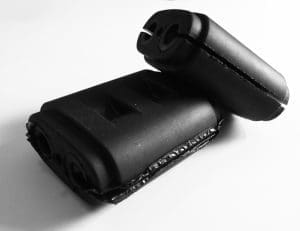 Numerous case studies and success stories highlight the effectiveness of cryogenic deflashing in various manufacturing applications. One such example is a manufacturer of automotive seals and gaskets who implemented cryogenic deflashing in their production process. By adopting cryogenic deflashing, they were able to achieve consistently smooth and dimensionally accurate parts, leading to improved product quality and customer satisfaction. The process also allowed them to reduce labour costs and shorten lead times, resulting in increased productivity and higher profitability.
Numerous case studies and success stories highlight the effectiveness of cryogenic deflashing in various manufacturing applications. One such example is a manufacturer of automotive seals and gaskets who implemented cryogenic deflashing in their production process. By adopting cryogenic deflashing, they were able to achieve consistently smooth and dimensionally accurate parts, leading to improved product quality and customer satisfaction. The process also allowed them to reduce labour costs and shorten lead times, resulting in increased productivity and higher profitability.
Another success story comes from a medical device manufacturer that used cryogenic deflashing to produce surgical instruments. The precision and cleanliness achieved through cryogenic deflashing ensured that the instruments met the stringent quality standards of the medical industry. This not only enhanced patient safety but also improved the company’s reputation and market competitiveness. The cost savings achieved through cryogenic deflashing allowed the manufacturer to invest in research and development, leading to the development of innovative new products.
These case studies and success stories demonstrate the tangible benefits that cryogenic deflashing can bring to manufacturing processes. From improved product quality to increased productivity and cost savings, cryogenic deflashing has proven its value across a range of industries and applications.
Challenges and considerations when adopting cryogenic deflashing
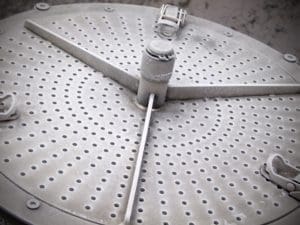 While cryogenic deflashing offers numerous advantages, there are certain challenges and considerations that manufacturers should be aware of when adopting this process. One key consideration is the initial investment required for cryogenic deflashing equipment and infrastructure. Depending on the size and volume of your production, this investment can be significant. However, it is important to weigh this against the potential cost savings and long-term benefits that cryogenic deflashing can bring to your manufacturing process.
While cryogenic deflashing offers numerous advantages, there are certain challenges and considerations that manufacturers should be aware of when adopting this process. One key consideration is the initial investment required for cryogenic deflashing equipment and infrastructure. Depending on the size and volume of your production, this investment can be significant. However, it is important to weigh this against the potential cost savings and long-term benefits that cryogenic deflashing can bring to your manufacturing process.
Another challenge is the need for proper training and expertise. Cryogenic deflashing involves working with extreme cold temperatures and cryogenic agents, which can pose safety risks if not handled properly. It is crucial to ensure that your team receives the necessary training and education to operate the cryogenic equipment and handle the cryogenic agents safely. This may involve partnering with cryogenic deflashing experts or service providers who can provide the required training and support.
Furthermore, it is important to consider the scalability of cryogenic deflashing for your manufacturing process. If you anticipate significant growth or changes in your production volume, you need to ensure that the cryogenic deflashing equipment and infrastructure can accommodate these changes. This may involve selecting flexible and scalable equipment or partnering with a cryogenic deflashing service provider who can adapt to your evolving needs.
Conclusion: Embracing the future of manufacturing with cryogenic deflashing
 In conclusion, cryogenic deflashing is poised to reshape the future of manufacturing. The numerous benefits it offers, including improved product quality, increased productivity, cost savings, and environmental sustainability, make it an attractive choice for manufacturers across various industries. By utilising extreme cold temperatures to remove excess flash and burrs, cryogenic deflashing ensures that the final product meets the required specifications and standards. Its non-abrasive nature and automated process make it a reliable and efficient choice for manufacturers looking to streamline their production processes and meet customer demands.
In conclusion, cryogenic deflashing is poised to reshape the future of manufacturing. The numerous benefits it offers, including improved product quality, increased productivity, cost savings, and environmental sustainability, make it an attractive choice for manufacturers across various industries. By utilising extreme cold temperatures to remove excess flash and burrs, cryogenic deflashing ensures that the final product meets the required specifications and standards. Its non-abrasive nature and automated process make it a reliable and efficient choice for manufacturers looking to streamline their production processes and meet customer demands.
As cryogenic deflashing technology continues to advance, its applications and benefits are expected to expand even further. With increasing adoption and advancements, cryogenic deflashing is set to become a staple in manufacturing processes, providing manufacturers with a competitive edge and enabling them to produce high-quality products more efficiently. By embracing the future of manufacturing with cryogenic deflashing, manufacturers can stay ahead of the competition and meet the evolving demands of the industry. So, if you’re ready to take your manufacturing process to the next level, consider the exciting potential of cryogenic deflashing and the numerous benefits it can bring to your business.
For more information about de-burring and de-flashing, or to discuss your requirements, contact SRM today.

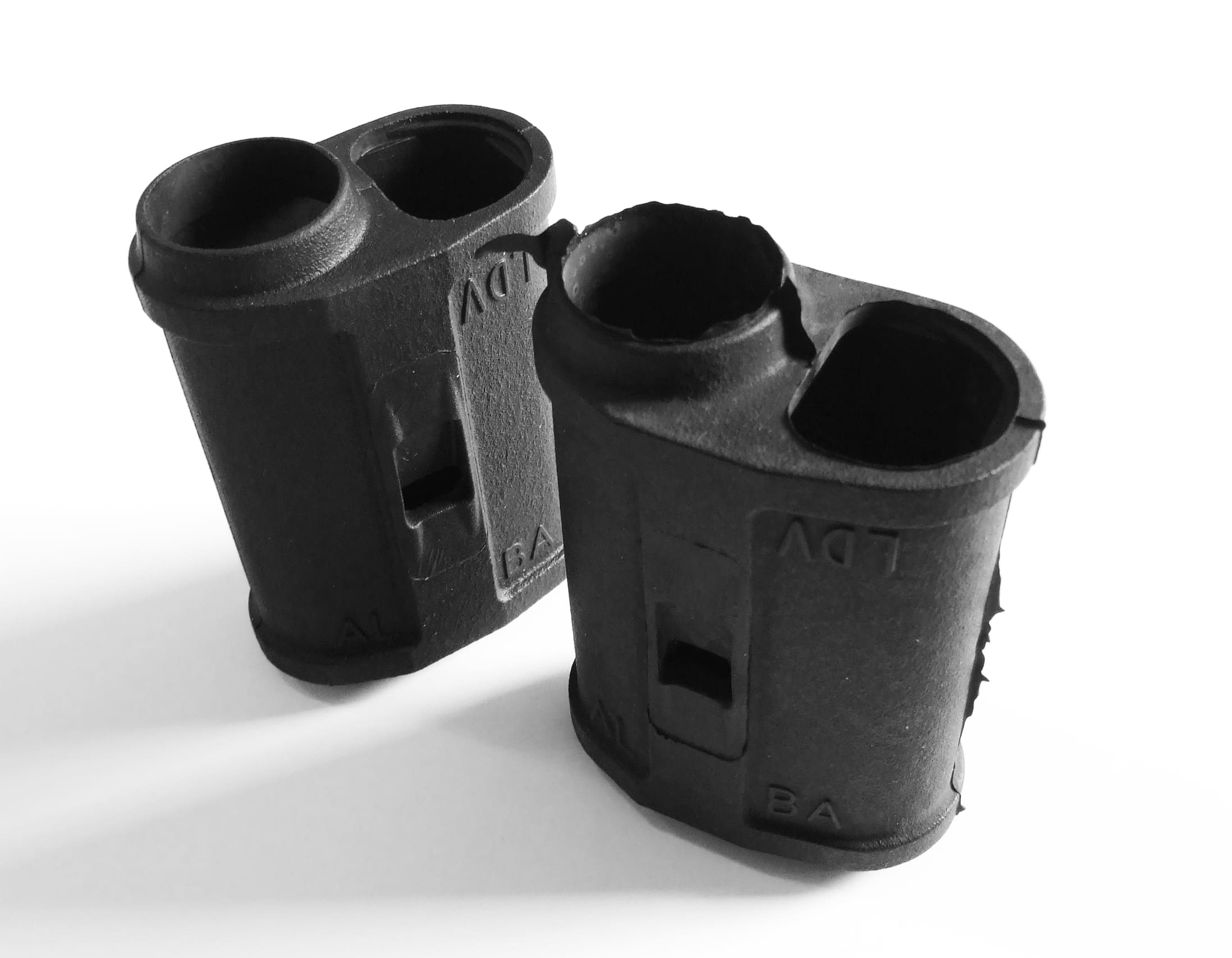 The benefits of cryogenic deflashing in manufacturing
The benefits of cryogenic deflashing in manufacturing